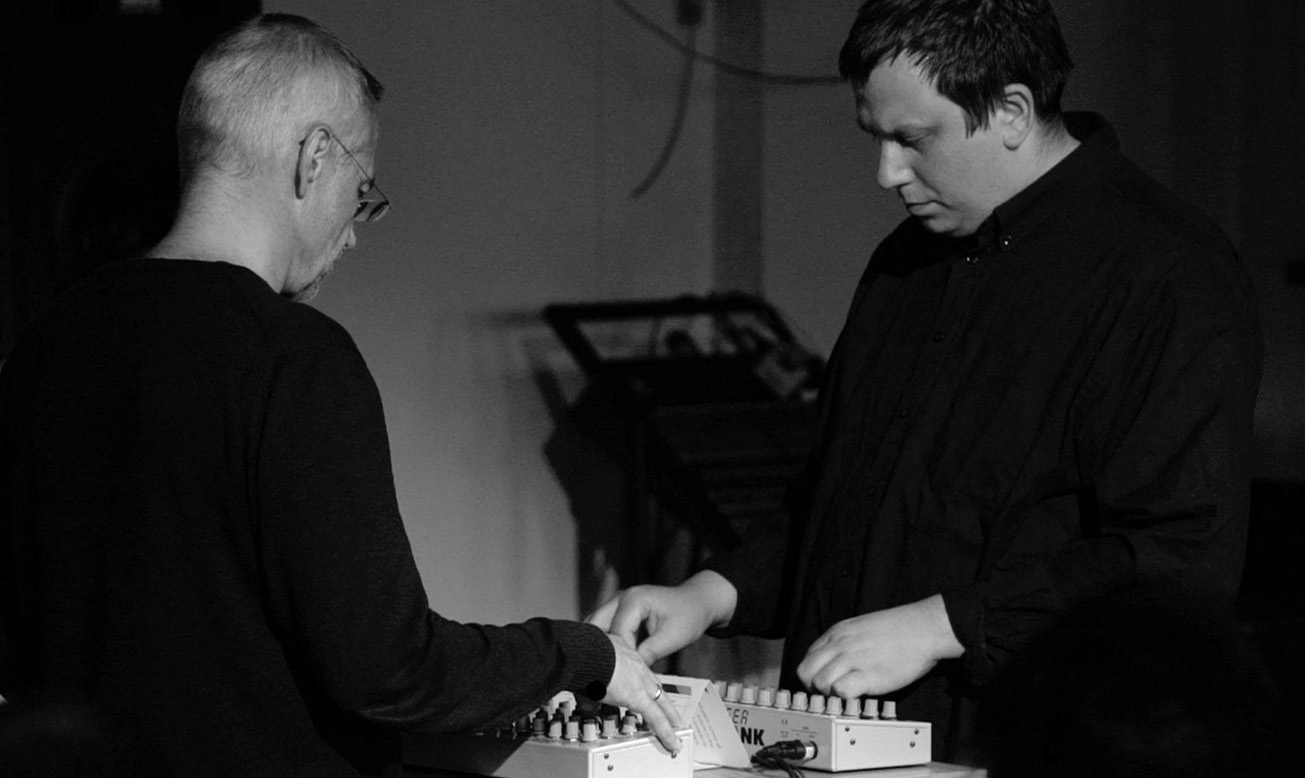utrumque

utrumque is an artistic and scientific collaboration between Gerhard Eckel and Ludvig Elblaus, as a part of Elblaus' work as a postdoc at NAVET. Several projects are currently in development by utrumque. The Inteference Project attempts room scale sonic circuit bending by exploring acoustic feedback on a human scale. The Engravings Project looks at how artistic concepts are affected by transformations between materials with different characteristic ways of breaking down.
Interference
The Interference Project is an exploration of co-created and shared experiences of acoustic feedback, from subtle to rumbling, from flickering resonances to long form drones. By using custom software solutions combined with site specific loudspeaker and microphone setups, audio installations are set up. The installations evolve slowly over time and react to the visitors through the dampening of the resonances in the room caused by their presence. This makes the pieces not only site specific, but hyper-localized within the space, as all visitors will have a unique perspective.
The project is therefore an exploration of structures of control and power in interactive installations. In an attempt to challenge the pervasive model, where the designer of an interactive system clearly defines the possible outputs and exposes them to the visitor through some vocabulary of actions, Interference is about giving all participants a more equal footing. By allowing the audience to directly manipulate the same material as the performers, albeit by different means, a heightened sense of presence can be reached. In this way, the physicality of the room and the bodies acting within it is highlighted, working against the traditional electro acoustic tradition of neutral spatialization where the room ideally is made to be invisible, moving towards the traditions of acoustic music where one always has to take the room into account.
Reaching a state of such nuanced interplay between participants is not always easily achieved, therefore, the software tools developed for setting up these installations are capable of steering the acoustic situation away from locked and steady states, into more ambiguous territory, and to frequency ranges where the human body can have a big influence.
Furthermore, the very act of exploring the pieces has the possibility to alter the experience for everyone else present. Once set up, the installation also offers Eckel and Elblaus real time control of the software to the point of being able to play the room as an electro acoustic concert performance. The audience can either sit and listen or engage by moving around the room to continuously interfere with the performers' emerging tuning of the room.
utrumque released three pieces from the Interferences Project, digitally and on cassette tape. The three pieces, KTH, KMH, and IEM, are based on live recordings made in the R1 Reaktorhall at the KTH Royal Institute of Technology in Stockholm, the Klangkupol at the Royal College of Music in Stockholm, and in the CUBE at the Institut für Elektronische Musik und Akustik in Graz, respectively. The release is available on Bandcamp.
utrumque.bandcamp.com/album/interferences
Team
Ludvig Elblaus, KTH,
elblaus@kth.se
Gerhard Eckel, IEM.
